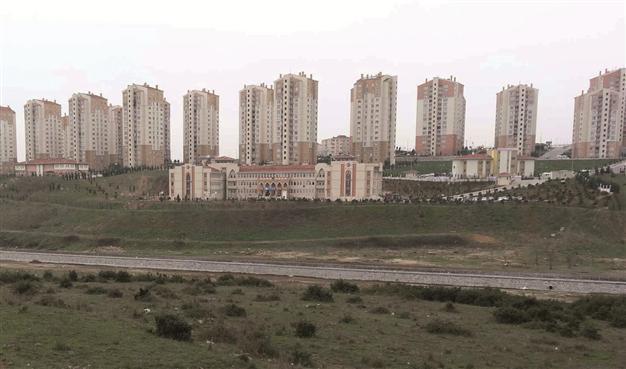TOKİ criticized at MoMA exhibition
NEW YORK

The exhibition in New York criticizes the Housing Development Agency of Turkey (TOKİ), proposing instead a project called the Collective and Collaborative Agency (KİTO).
As the result of a 14-month initiative to examine new architectural responses to rapid urban growth, New York's Museum of Modern Art (MoMA) is currently presenting an exhibition that addresses the increasingly inequitable urban development in six world cities, including Istanbul.In 2030, the world’s population will be a staggering 8 billion people. Of these, two-thirds will live in cities. Most will be poor. With limited resources, this uneven growth will be one of the greatest challenges faced by societies across the globe. Over the next years, city authorities, urban planners, designers, economists and many others will have to join forces to ensure these expanding urban enclaves remain habitable.
In the scope of the exhibition, six interdisciplinary teams of researchers and practitioners have been brought together to examine new architectural possibilities for six megacities: Istanbul, Hong Kong, Lagos, Mumbai, New York City and Rio de Janeiro.
Challenging assumed relationships between formal and informal, bottom-up and top-down urban development, the resulting design scenarios, developed over a 14-month initiative, consider how emergent forms of tactical urbanism can respond to alterations in the nature of public space, housing, mobility, the environment and other major issues of near-future urbanization.
 KİTO vs. TOKİ
KİTO vs. TOKİ For Istanbul, the proposals of Paris-based Atelier d’Architecture Autogeree and Istanbul-based Superpool are being exhibited. The Housing Development Agency of Turkey (TOKİ) is heavily criticized in the exhibition, and a project called Collective and Collaborative Agency (KİTO) is proposed in its place.
Turkey is currently one of the fastest-growing economies in Europe. At 14 million inhabitants and a yearly growth rate of 3.5 percent, Istanbul has fully benefited from this economic boom. Starting in the 1960s, its rapid urbanization has had three main phases: Gecekondus squatter villages; post-gecekondus’ additional building rights; and mass housing since the 1990s.
Unlike earlier “self-building” phases, the recent mass housing is organized predominantly through TOKİ, and it employs a single urban typology: gated complexes of repetitive tower clusters on open land.
The development of TOKİ parallels the emergence of a new middle class in Istanbul, for whom a TOKİ apartment is part of a dream of car and house ownership, even if this brings social isolation, long hours in traffic and long-term debt. This deeply indebted middle class is also prone to be the most vulnerable during periods of recession. In the face of continuing political, economic and ecological uncertainties, and the rising costs of energy, TOKİ inhabitants have to become more resilient.
KİTO is a proposal for a post-urban development agency that uses open-source, citizen-driven R-Urban regeneration to transform TOKİ complexes. KİTO works at different scales and levels of resilient action to retrofit spaces, equipment, services and institutions. KİTO’s collective interaction is facilitated via KİTO’da, an online network that creates an alternative economy, assigning value to local actions and empowering people to make, give, share and save energy, services, goods, knowledge and skills.
The exhibition at MoMA will run through May 10, 2015.
















